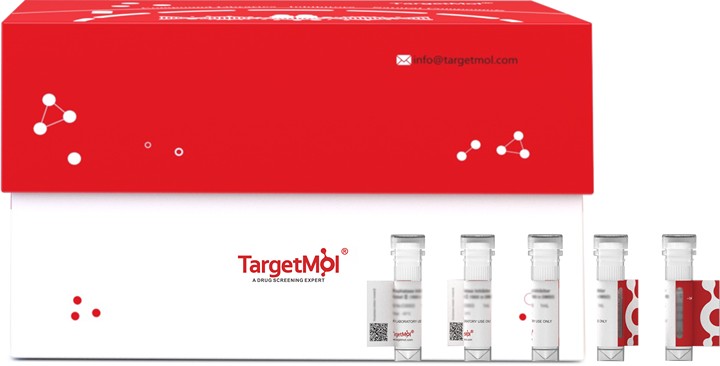购物车
全部删除  您的购物车当前为空
您的购物车当前为空
ISG15 Protein, Mouse, Recombinant (His) is expressed in yeast with C-6xHis tag. The predicted molecular weight is 18.9 kDa and the accession number is Q64339.

| 规格 | 价格 | 库存 | 数量 |
|---|---|---|---|
| 5 μg | ¥ 922 | 20日内发货 | |
| 10 μg | ¥ 1,530 | 20日内发货 | |
| 20 μg | ¥ 2,570 | 20日内发货 | |
| 50 μg | ¥ 3,880 | 20日内发货 | |
| 100 μg | ¥ 5,370 | 20日内发货 | |
| 200 μg | ¥ 7,870 | 20日内发货 | |
| 500 μg | ¥ 12,800 | 20日内发货 | |
| 1 mg | ¥ 19,200 | 20日内发货 |
| 生物活性 | Activity has not been tested. It is theoretically active, but we cannot guarantee it. If you require protein activity, we recommend choosing the eukaryotic expression version first. |
| 产品描述 | ISG15 Protein, Mouse, Recombinant (His) is expressed in yeast with C-6xHis tag. The predicted molecular weight is 18.9 kDa and the accession number is Q64339. |
| 种属 | Mouse |
| 表达系统 | P. pastoris (Yeast) |
| 标签 | C-6xHis |
| 蛋白编号 | Q64339 |
| 别名 | Ucrp,Ubiquitin-like protein ISG15,Ubiquitin cross-reactive protein,Isg15,Interferon-induced 17 kDa protein (IP17),Interferon-induced 15 kDa protein,G1p2 |
| 氨基酸序列 | MAWDLKVKMLGGNDFLVSVTNSMTVSELKKQIAQKIGVPAFQQRLAHQTAVLQDGLTLSSLGLGPSSTVMLVVQNCSEPLSILVRNERGHSNIYEVFLTQTVDTLKKKVSQREQVHEDQFWLSFEGRPMEDKELLGEYGLKPQCTVIKHLRLRGG |
| 蛋白构建 | 1-155 aa |
| 蛋白纯度 | > 90% as determined by SDS-PAGE. |
| 分子量 | 18.9 kDa (predicted) |
| 内毒素 | < 1.0 EU/μg of the protein as determined by the LAL method. |
| 缓冲液 | If the delivery form is liquid, the default storage buffer is Tris/PBS-based buffer, 5%-50% glycerol. If the delivery form is lyophilized powder, the buffer before lyophilization is Tris/PBS-based buffer, 6% Trehalose, pH 8.0. |
| 复溶方法 | Reconstitute the lyophilized protein in sterile deionized water. The product concentration should not be less than 100 μg/mL. Before opening, centrifuge the tube to collect powder at the bottom. After adding the reconstitution buffer, avoid vortexing or pipetting for mixing. |
| 存储 | Lyophilized powders can be stably stored for over 12 months, while liquid products can be stored for 6-12 months at -80°C. For reconstituted protein solutions, the solution can be stored at -20°C to -80°C for at least 3 months. Please avoid multiple freeze-thaw cycles and store products in aliquots. |
| 运输方式 | In general, Lyophilized powders are shipping with blue ice. Solutions are shipping with dry ice. |
| 研究背景 | Ubiquitin-like protein which plays a key role in the innate immune response to viral infection either via its conjugation to a target protein (ISGylation) or via its action as a free or unconjugated protein. ISGylation involves a cascade of enzymatic reactions involving E1, E2, and E3 enzymes which catalyze the conjugation of ISG15 to a lysine residue in the target protein. Its target proteins include SERPINA3G/SPI2A, JAK1, MAPK3/ERK1, PLCG1, TRIM25, STAT5A, MAPK1/ERK2 and globin. Isgylation of the viral sensor IFIH1/MDA5 promotes IFIH1/MDA5 oligomerization and triggers activation of innate immunity against a range of viruses, including coronaviruses, flaviviruses and picornaviruses. Can also isgylate: DDX58/RIG-I which inhibits its function in antiviral signaling response, IRF3 which inhibits its ubiquitination and degradation as well as EIF4E2 which enhances its cap structure-binding activity and translation-inhibition activity. Exhibits antiviral activity towards both DNA and RNA viruses, including influenza A and B virus, sindbis virus (SV) and herpes simplex type-1 (HHV-1). Plays a significant role in the control of neonatal Chikungunya virus (CHIKV) infection by acting as a putative immunomodulator of proinflammatory cytokines. Protects mice against the consequences of Chikungunya virus infection by downregulating the pathogenic cytokine response, often denoted as the cytokine storm. Plays a role in erythroid differentiation. The secreted form of ISG15 can: induce natural killer cell proliferation, act as a chemotactic factor for neutrophils and act as a IFN-gamma-inducing cytokine playing an essential role in antimycobacterial immunity. The secreted form acts through the integrin ITGAL/ITGB2 receptor to initiate activation of SRC family tyrosine kinases including LYN, HCK and FGR which leads to secretion of IFNG and IL10; the interaction is mediated by ITGAL. |